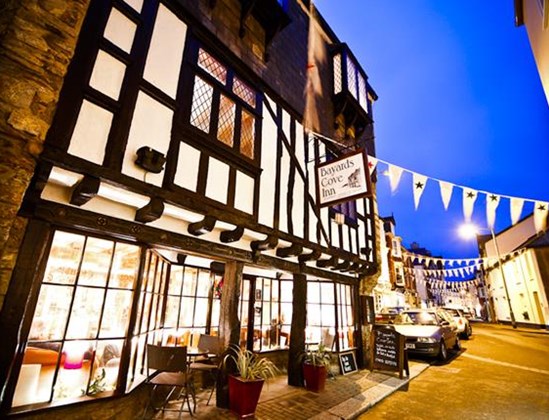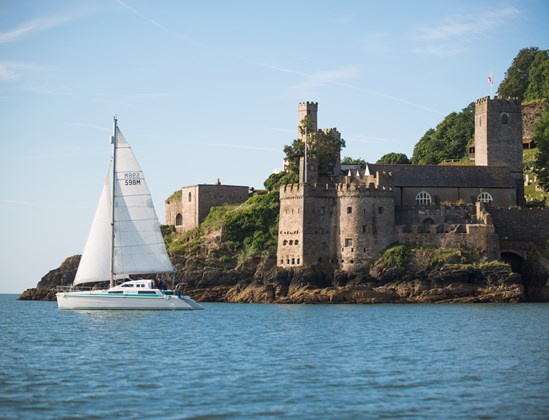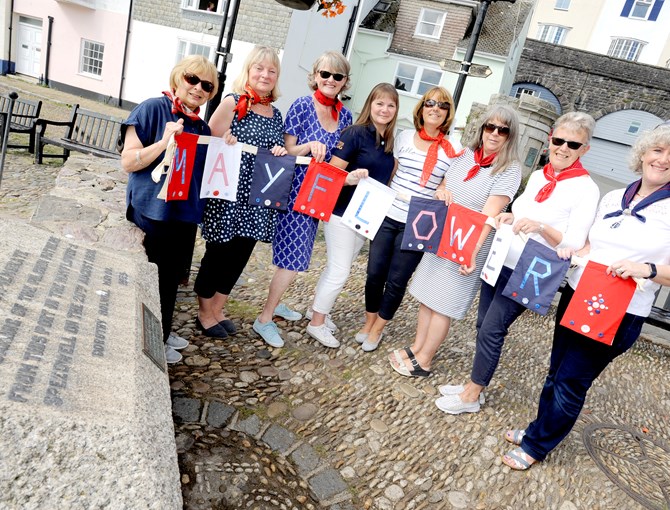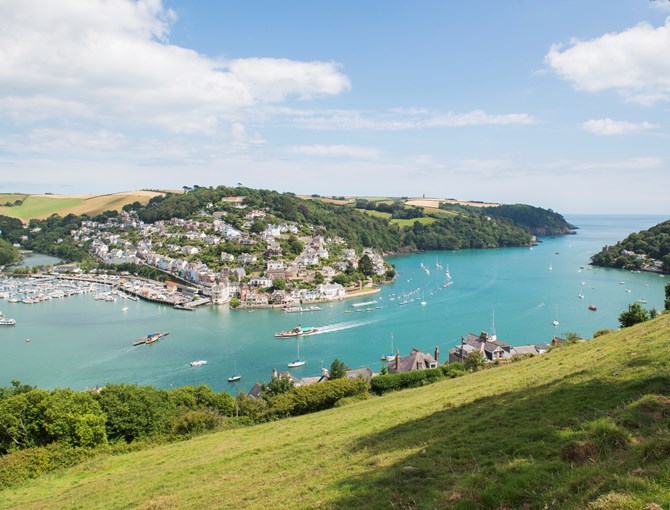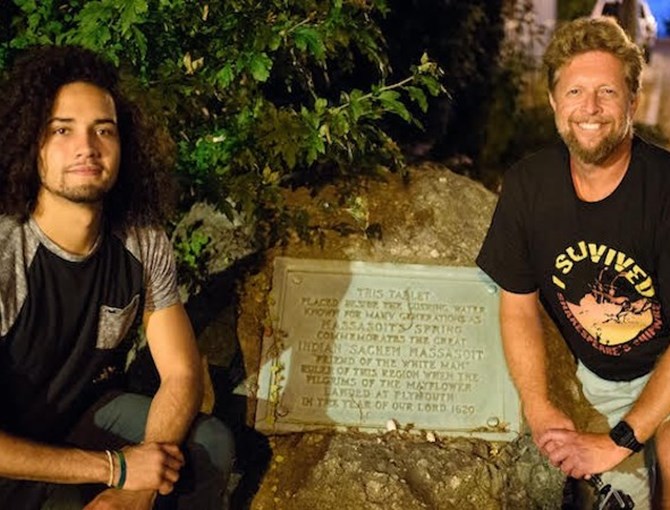

- Contact Us
- Search
-
Mayflower400 partner destinations:
Visiting Dartmouth, Devon
Dartmouth is situated on the bank of the River Dart in South Devon. It is a truly picturesque town, combining heritage, fantastic shopping and places to eat, with a vibrant waterfront hosting an active sailing community. The annual Royal Regatta is one of the largest sailing events in the UK, and attracts visitors from all over the world.
The Britannia Royal Naval College, dating from 1863, overlooks the port of Dartmouth from its position on the hill; this is where all Royal Naval officers receive their initial service and leadership training, joined by many international Naval officers. The College is sometimes open for guided tours - and is thought to be the place where Queen Elizabeth met Prince Philip.
Dartmouth is a creative town - the small streets of the shopping heart of the town are bursting with local artists working in their shops and galleries. The Flavel Arts Centre has a varied programme of events and exhibitions to suit all tastes.
The town also boasts a strong historical and social heritage and guided walks around the old town can be arranged. The nearby Dartmouth Museum, situated in the 17th Century “Butterwalk”, shares stories of the town’s maritime history. The oldest preserved steam engine in the world – invented by Dartmouth born Thomas Newcomen - can be viewed at the Dartmouth Visitor Centre. Other places of interest include Bayard’s Cove Fort (1510), Dartmouth Castle (1488) and St Saviour’s (1372) and St Petrox (1641) Churches.
Dartmouth and the Mayflower story
Having set sail from Southampton, the Mayflower, with Pilgrims from the north of England, and Speedwell, carrying the Separatists from Lieden in Holland, didn't get very far before the Speedwell began to take on water again - either because she carried too much sail, straining her timbers, or the direct result of sabotage by the reluctant crew. The ships diverted to Dartmouth for repairs, arriving on 23 August 1620.
According to passengers, the Speedwell was leaking like a sieve and required urgent attention. The Pilgrims were regarded with some suspicion by the Dartmouth locals and while the repairs were made in Bayard’s Cove harbour, the Mayflower moored upstream on the River Dart beside what is now known as Pilgrim Hill. While much has changed on the waterfront since, they would still recognise the Tudor Bayard’s Cove Fort, Lower Street, Smith Street, St Saviour’s church and Agincourt House, now the Bayard's Cove Inn.
It took about a week for the port's skilled craftsmen to make good the damage before the ships headed out into the English Channel, North Atlantic bound.
Supported by our national sponsors and funding partners
The Mayflower 400 programme in Dartmouth
Dartmouth’s Mayflower 400 programme was developed by a team of volunteers, who used their professional skills to create an incredibly ambitious programme of activity for the benefit of their community and to further enhance the town’s visitor offer through 2020 and beyond. Highlights included:
- The Mayflower Heritage Trail paints a colourful picture of Dartmouth in 1620, and also includes some highlights from Dartmouth’s earlier and later history. The route is based on a map of the town drawn in 1619 and remarkably many beautiful historic buildings have survived from that time. Bayards Cove, the old harbour quay, is a focal point as the Mayflower and Speedwell moored in the river close by.
- ‘Pilgrim: New Horizons’ was a newly-commissioned sculpture created by Mark Gregory and the students of Dartmouth Academy. The figure is made of galvanised steel, with worked copper panels, and stands strong on the South Embankment, looking out to the mouth of the River Dart.
You can read more about the events in Dartmouth on the official Dartmouth Mayflower 400 website.
Dartmouth Mayflower Highlights
- Events
- Attractions
- Accommodation
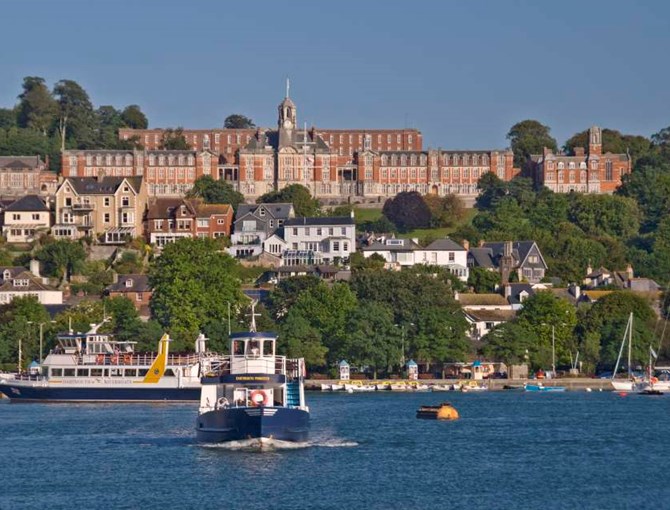
Britannia Royal Naval College
Guided Walking Tour
With 150 years of history, Britannia Royal Naval College is an essential place to visit in Dartmouth.
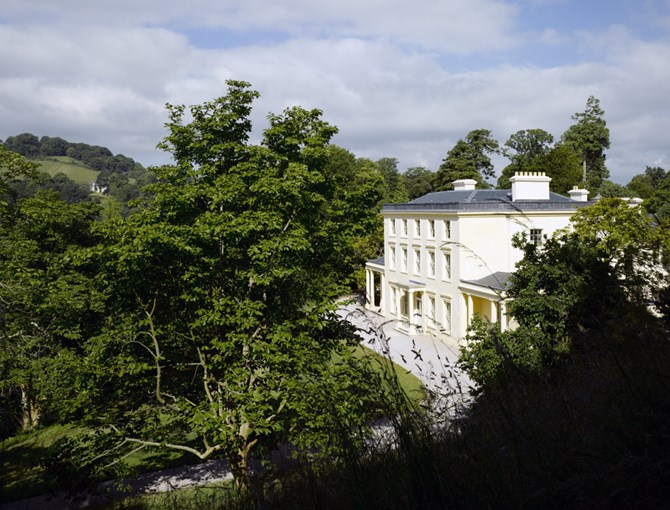
National Trust Greenway House
Visitor Attraction
Author Agatha Christies much loved holiday home, owned by the National Trust.

Dartmouth Castle
Historic Site
A 600 year old castle with stunning estuary views.
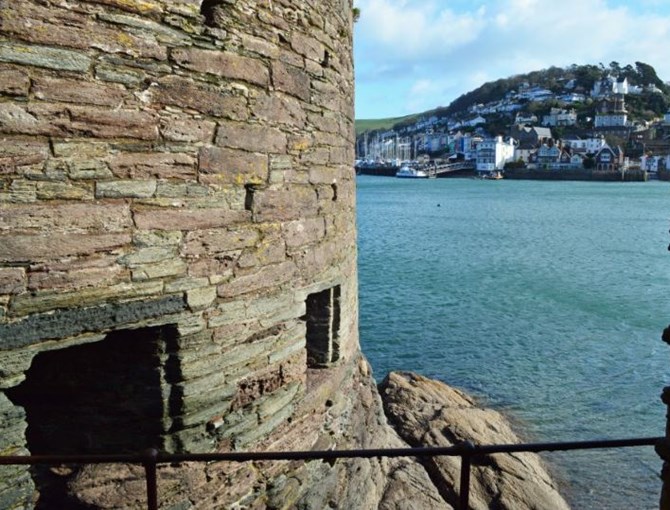
Bayards Cove Fort
Historic Site
A Tudor fort, built between 1522 and 1536 to protect Dartmouth from attack.

Dartmouth Museum
Historic Site
Discover Dartmouth’s fascinating history housed in the 1600 Butterwalk building.
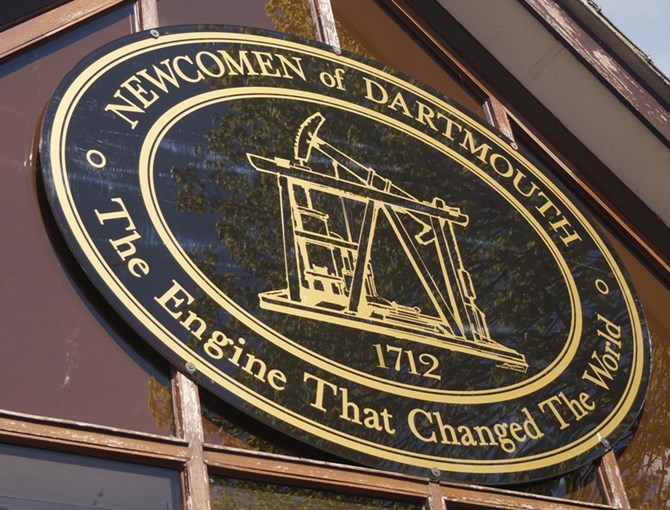
The Newcomen Engine
Visitor Attraction
View the oldest preserved working steam engine in the world.
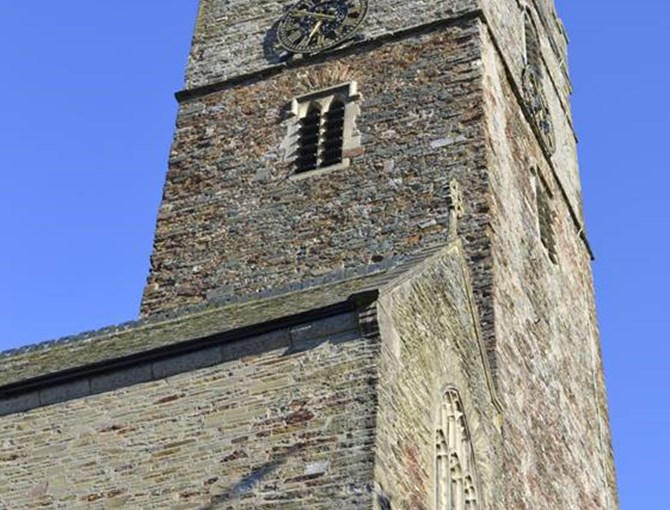
St Saviour's Church
Visitor Attraction
The town church, dating from 1372.
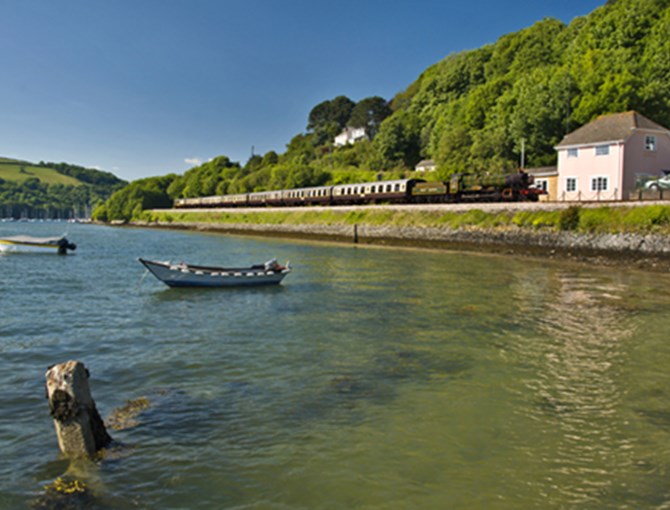
Dartmouth Steam Railway
Visitor Attraction
Enjoy days out on a steam train, boat trips and paddle steamer on the River Dart

National Trust - Coleton Fishacre
Visitor Attraction
A 1920’s Jazz Age country retreat with stunning coastal gardens
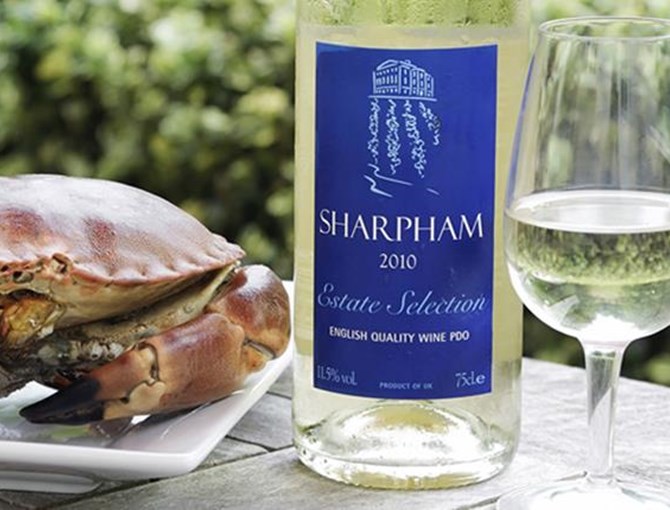
Sharpham Vineyard and Cheese Dairy
Self-Guided Tour
Vineyard and Cheese Dairy on the banks of the stunning River Dart
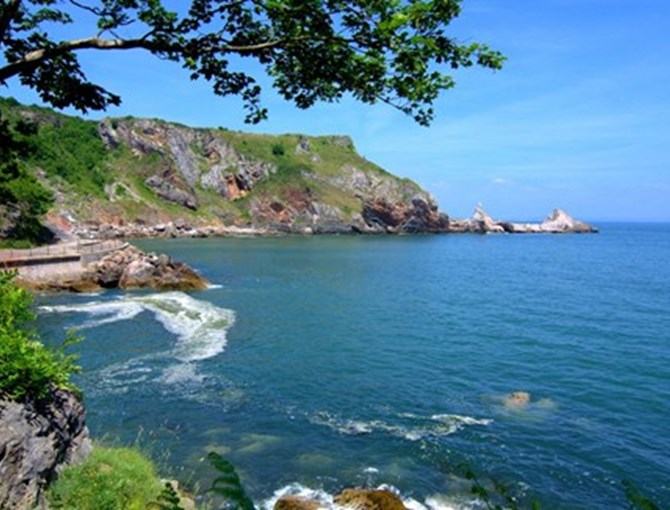
Unique Devon Tours
Guided Walking Tour
Unique Devon Tours organises fascinating and entertaining holidays for small groups in this beautiful and intriguing area of England.
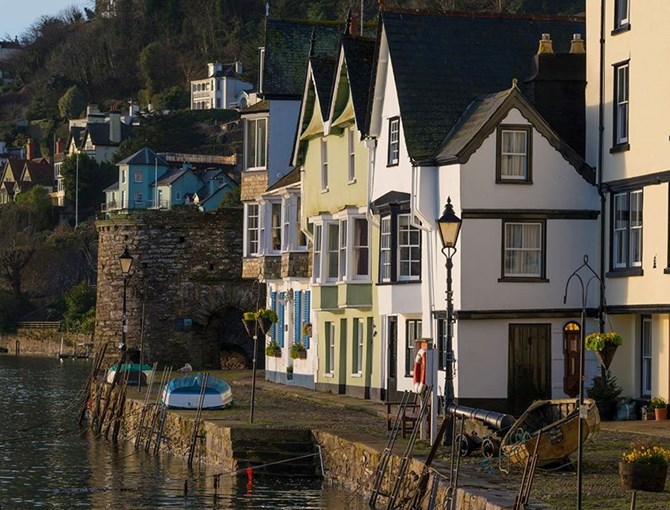
Free
Dartmouth Heritage Trail
Guided Walking Tour
Royal Castle Hotel
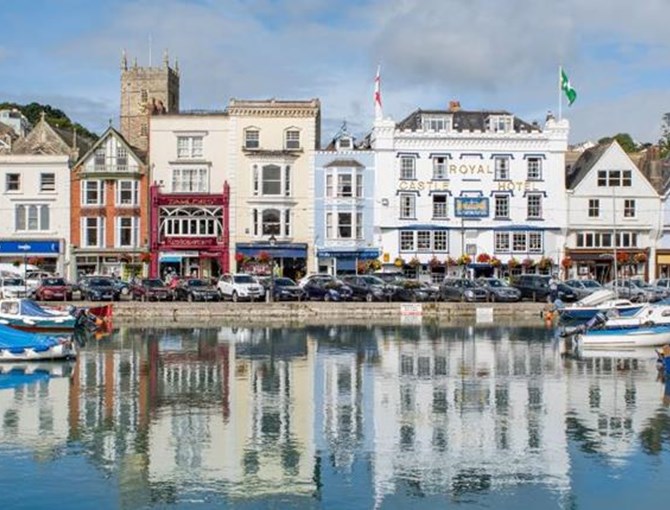
Royal Castle Hotel
Hotel
16th Century traditional English coaching inn situated on the quayside with 24 rooms.
Dart Marina Hotel and Spa
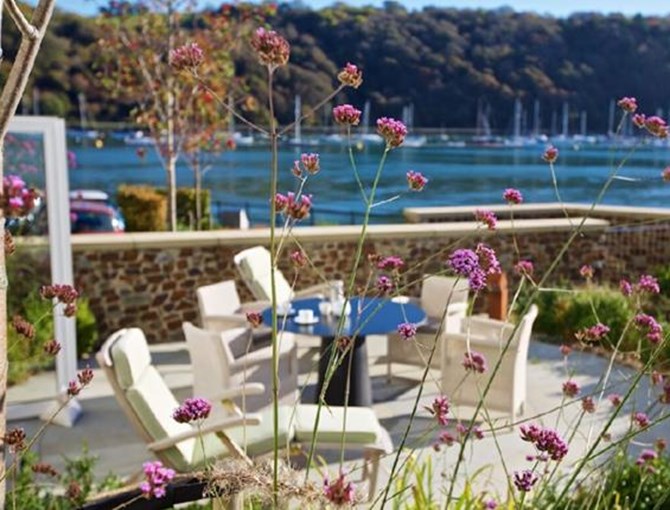
Dart Marina Hotel and Spa
Self-Catering
Luxury riverside hotel and spa on the banks of the River Dart.
Bayards Cove Inn
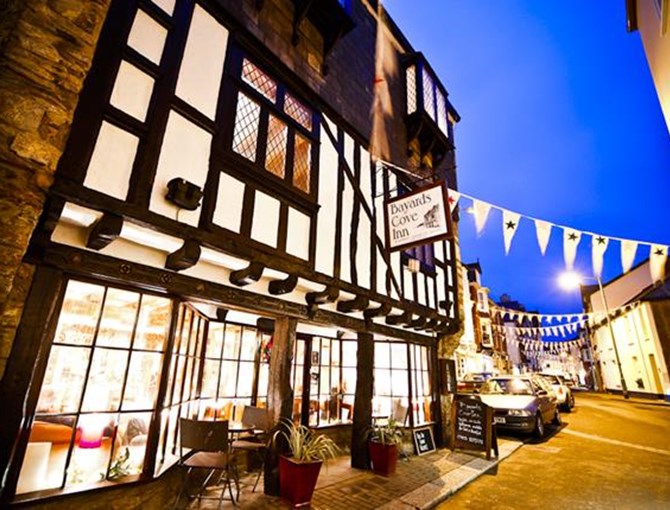
Bayards Cove Inn
Bed & Breakfast
500 Year old Bayards Cove Inn is close to the site where repairs were made to the Speedwell.
Leonards Cove
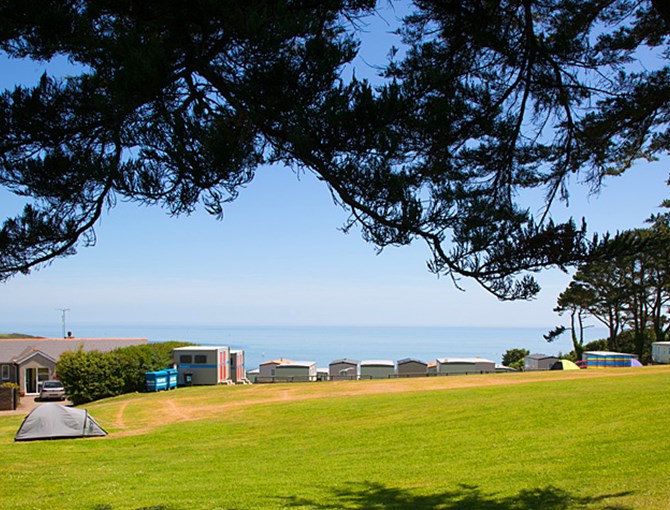
Leonards Cove Holiday Park
Camping and Caravanning
Stunning clifftop Holiday Park within minutes of Dartmouth
News
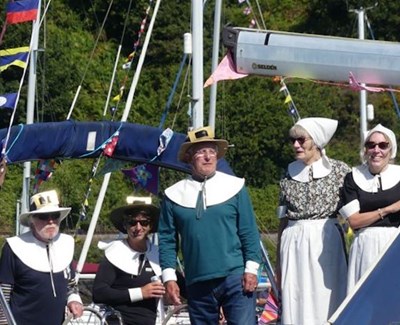
All the winners from the Mayflower River Parade in Dartmouth
News
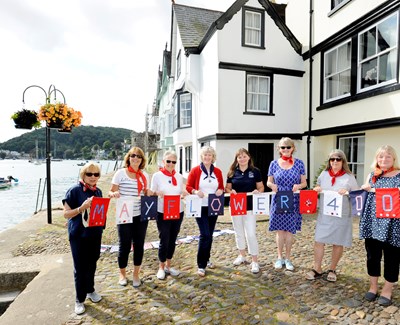
Thousands of Mayflower pennants decorate Dartmouth
Blog
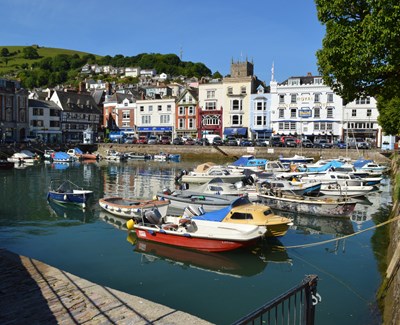
10 things you didn't know about Dartmouth
News

Children's book tells historic 'Stories of the Mayflower'
News
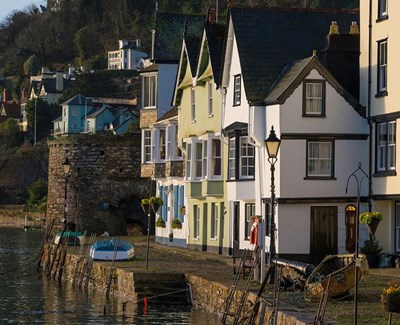
Dartmouth Heritage Trail opens - with 13 historic Mayflower locations to visit
Sign up for the latest Mayflower 400 news
You'll be the first to hear the latest Mayflower news, events, and more.
Log In
Register
Mayflower 400 Proudly Supported by our National Sponsors and Funding Partners
